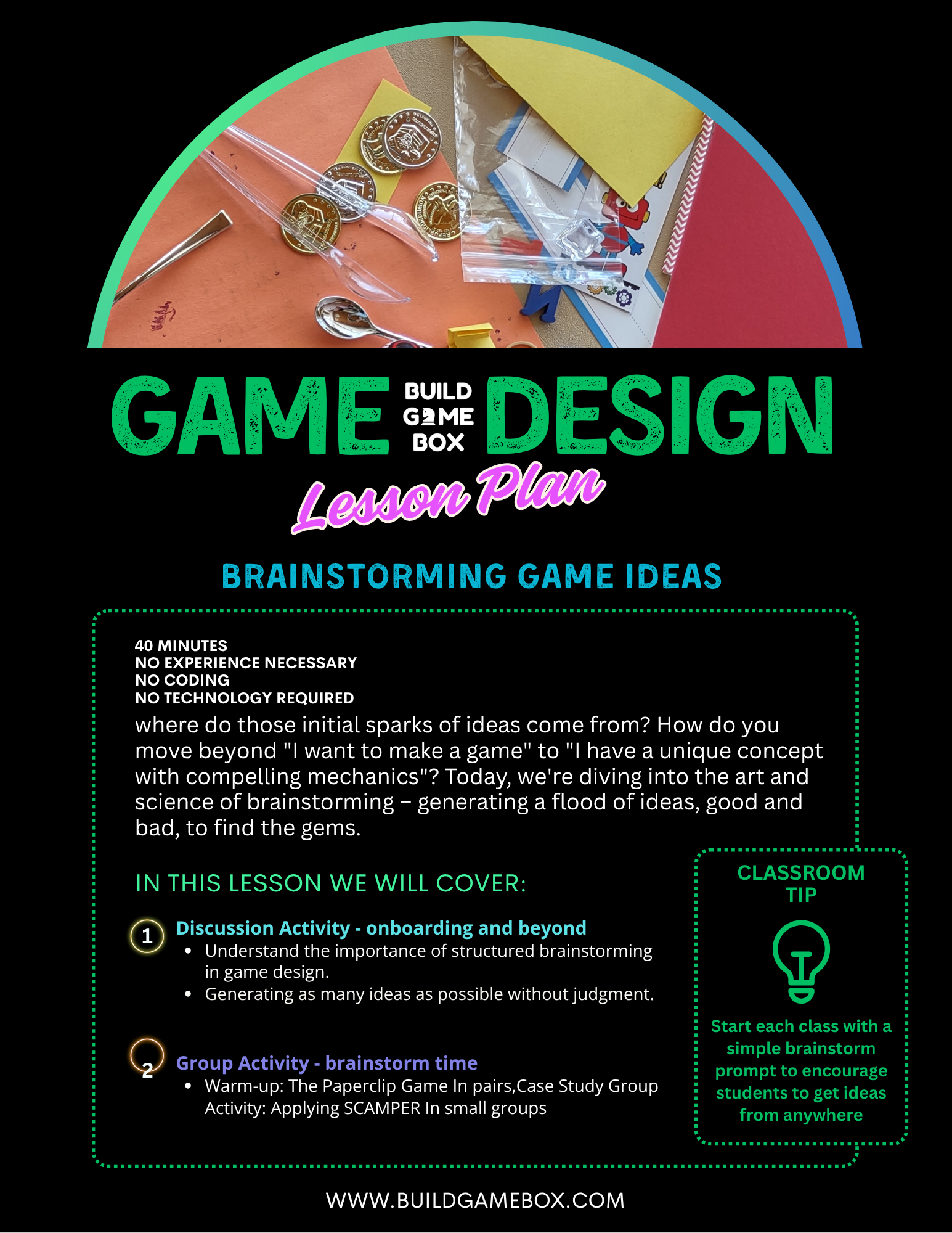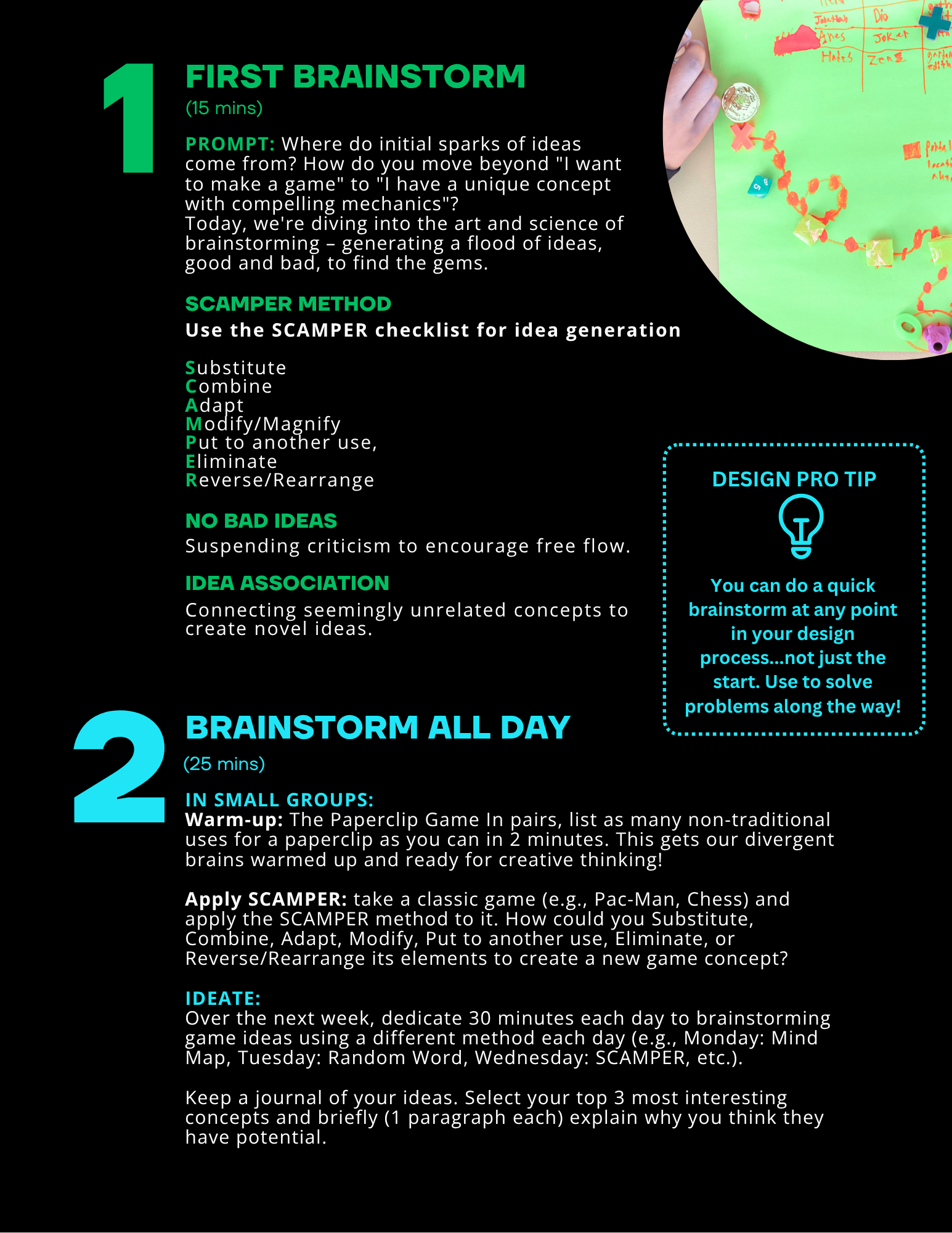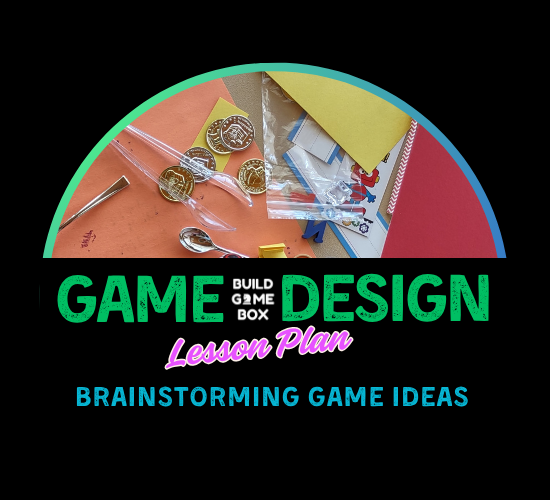

Brainstorm Methods for Games
Where do initial sparks of ideas come from? How do you move beyond "I want to make a game" to "I have a unique concept with compelling mechanics"? In this lesson, we're diving into the art and science of brainstorming – generating a flood of ideas, good and bad, to find the gems.
Learning Objectives
By the end of this lesson, you should be able to:
- Understand the importance of structured brainstorming in game design.
- Learn and apply several effective brainstorming techniques.
- Foster a creative environment conducive to idea generation.
- Critically evaluate brainstormed ideas for potential and feasibility.
- Collaborate effectively in group brainstorming sessions
Key Concepts
- Divergent Thinking: Generating as many ideas as possible without judgment.
- Convergent Thinking: Evaluating and refining ideas to select the most promising ones.
- Quantity over Quality (initially): The principle that more ideas lead to better ideas.
- No Bad Ideas (during generation): Suspending criticism to encourage free flow.
- Idea Association: Connecting seemingly unrelated concepts to create novel ideas.
- Mind Mapping: A visual technique for organizing thoughts and ideas around a central theme.
- SCAMPER Method: A checklist for idea generation (Substitute, Combine, Adapt, Modify/Magnify, Put to another use, Eliminate, Reverse/Rearrange).
- Random Word Association: Using random words or images as prompts to spark new ideas.
Activities
Warm-up: The Paperclip Game In pairs, list as many non-traditional uses for a paperclip as you can in 2 minutes. This gets our divergent brains warmed up and ready for creative thinking!
Class Brainstorming Session: "A Game About [Random Object]" As a class, let's pick a completely random object (e.g., a toaster, a sock, a cloud). Now, using free association, let's brainstorm as many game concepts as possible centered around or inspired by that object. Remember: no judgment, just ideas!
Group Activity: Applying SCAMPER In small groups, take a classic game (e.g., Pac-Man, Chess) and apply the SCAMPER method to it. How could you Substitute, Combine, Adapt, Modify, Put to another use, Eliminate, or Reverse/Rearrange its elements to create a new game concept?
Individual Exercise: Mind Mapping Individually, choose a game genre you enjoy (e.g., RPG, platformer, strategy). Create a quick mind map, starting with the genre in the center, and branching out with sub-genres, mechanics, themes, and potential new ideas.
Homework
Personal Brainstorming Challenge: Over the next week, dedicate 30 minutes each day to brainstorming game ideas using a different method each day (e.g., Monday: Mind Map, Tuesday: Random Word, Wednesday: SCAMPER, etc.). Keep a journal of your ideas. Select your top 3 most interesting concepts and briefly (1 paragraph each) explain why you think they have potential.
Further Reading: Search for articles or videos on "design thinking for games" or "ideation techniques in game development."
Further Watching: Look for GDC Vault talks on "concept generation" or "pre-production."
Conclusion:
Brainstorming isn't just about having a "eureka!" moment; it's a disciplined process of generating volume, suspending judgment, and then refining. The more diverse your ideas, the higher the chance of striking gold. Don't be afraid to be silly, to be wild – the best ideas often come from unexpected places. Once we have those ideas, the next step is to get them out of our heads and onto something tangible.
